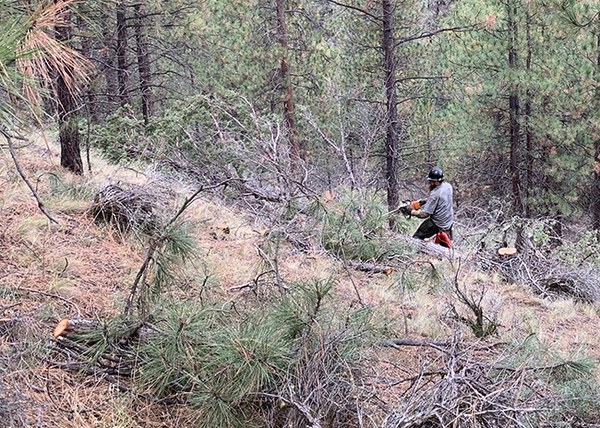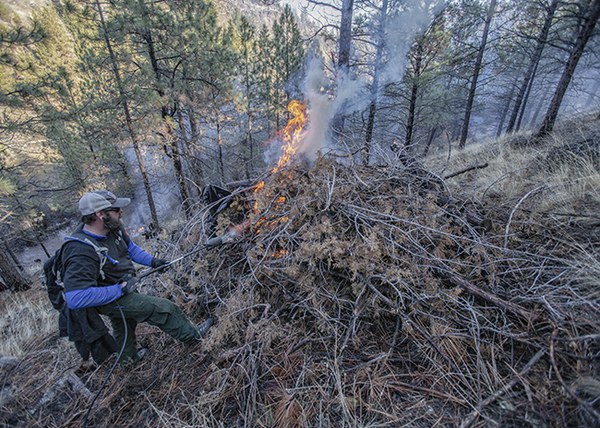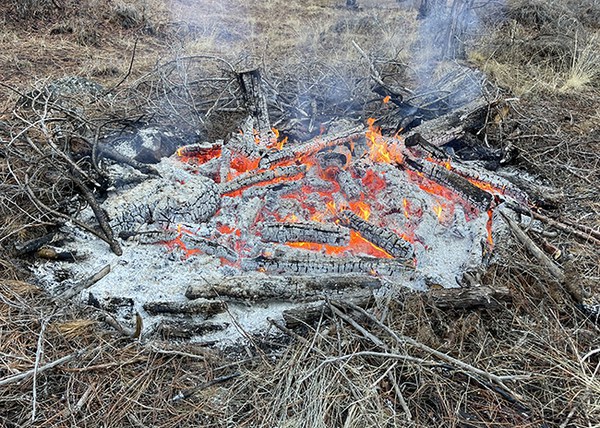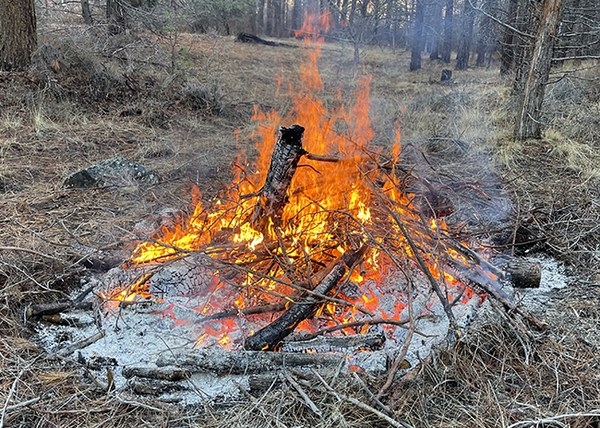By Amanda Egertson and Jana Hemphill
Here in Central Oregon, we often hear about pile burning in our forests. From road signs notifying us of local burns to news stories about forest management, it seems pile burning is a hot topic (pun intended). Get a step-by-step account of what goes into planning this type of forest restoration.
Why are we thinning the forest?
Recently, we thinned the forest at Aspen Hollow Preserve in order to mimic historic conditions and improve the health of the remaining pine and aspen. It will also benefit the native grass and wildflowers, provide improved habitat for wildlife, and help reduce wildfire danger for our nearby neighbors.
Why pile burn?
When conducting forest restoration, there are often areas that have steep slopes, a lack of access roads, or places where we’re unable to remove trees that have been cut. If this is the case, the best option is to pile burn the cut trees. At Aspen Hollow Preserve, we cut small-diameter juniper and also some small-diameter pine in thickets that were dense and unhealthy.
The Process
The first step in pile burning is to develop a plan for thinning and burning, then submit the plan to the Oregon Department of Forestry (ODF) for review. For our Aspen Hollow Preserve forest restoration and burning plan, we contracted with a local company, GFP Enterprises. Once ODF reviewed and approved the plan, a permit was granted to do the work.
The Land Trust completed the forest thinning at Aspen Hollow Preserve in the fall of 2019. The cut material was carefully piled, making sure to construct the piles properly so they burned well. Because the piles were comprised of both juniper and pine, we had to wait a year for the pine to dry out sufficiently so that it would burn well.
The Land Trust then worked with both ODF and GFP Enterprises to determine a safe burn window. Safe ground conditions include high moisture levels in the soil and surrounding vegetation that helps prevent the spread of fire.
Once we had a safe burn window, we notified our neighbors so that folks nearby knew what we are doing, when, and why.
On burn day, we completed a final weather check, looking at factors such as relative humidity and wind. We made a call to ODF for approval of burning on that particular day. After we received final approval, we contacted the Central Oregon Interagency Dispatch Center and local fire departments so they were aware of the pile burn in case anyone sees smoke and calls it in.
Then it's time to light the burn piles! Because of the intense heat at the center of the burn pile, the material in the center burns most quickly and breaks away from the material at the perimeter of the pile. Once this occurs, we “chunk” the piles, meaning we toss the material from the perimeter of the burn piles into the center, so it burns as well. The goal is to ensure as much of the material is burned as possible.

We usually finish lighting the burn piles by late morning or early afternoon and then remain on-site each burn day until the fires are completely out.
We hope you enjoyed learning a little bit more about this type of forest restoration on Land Trust protected lands!
Learn more:
- About East Cascade Dry Forests and forest restoration
- Musings on Restoration and Humanism in the Anthropocene
- Another forest restoration project: Land Trust Gives Aspens a Chance


